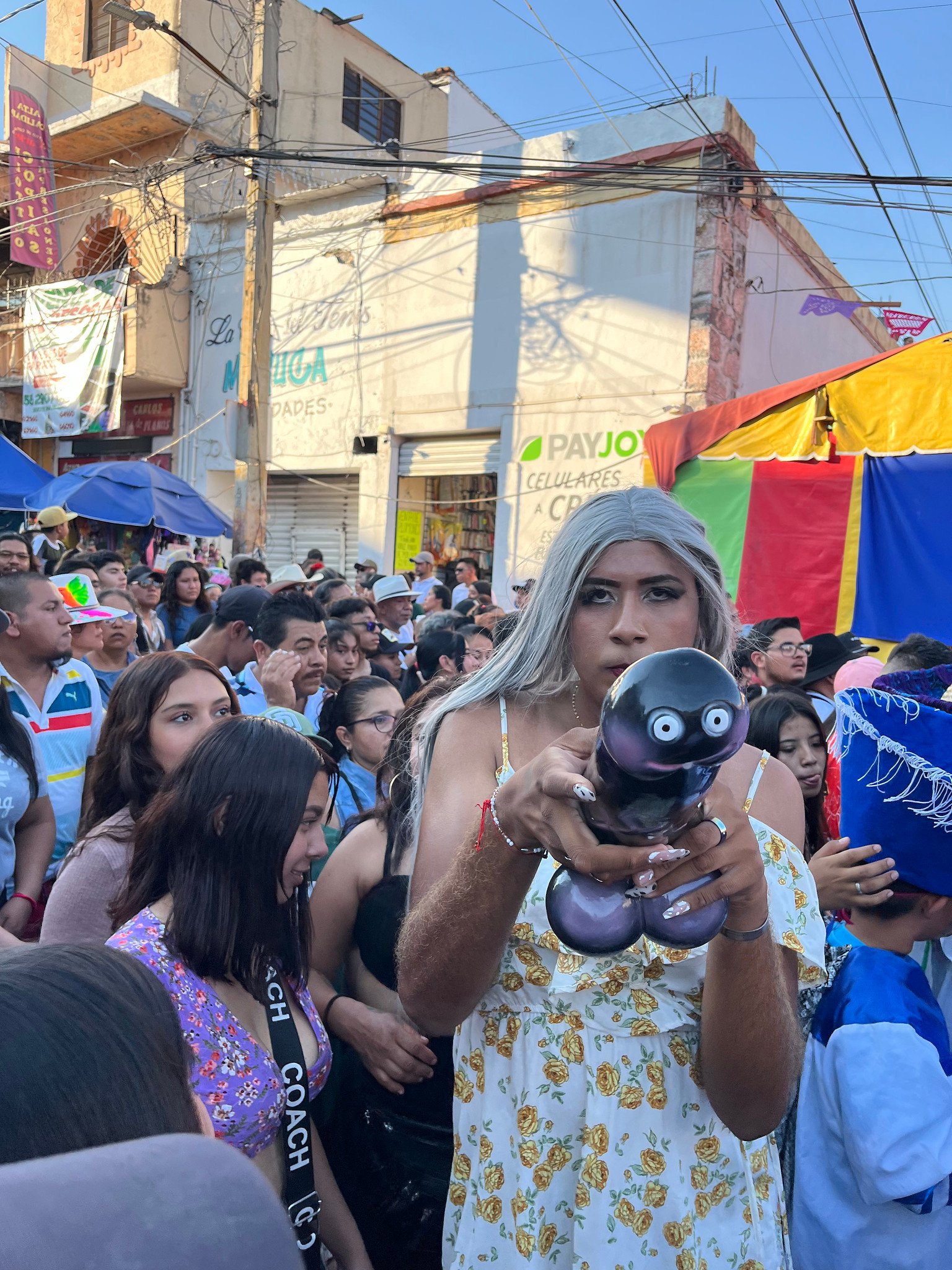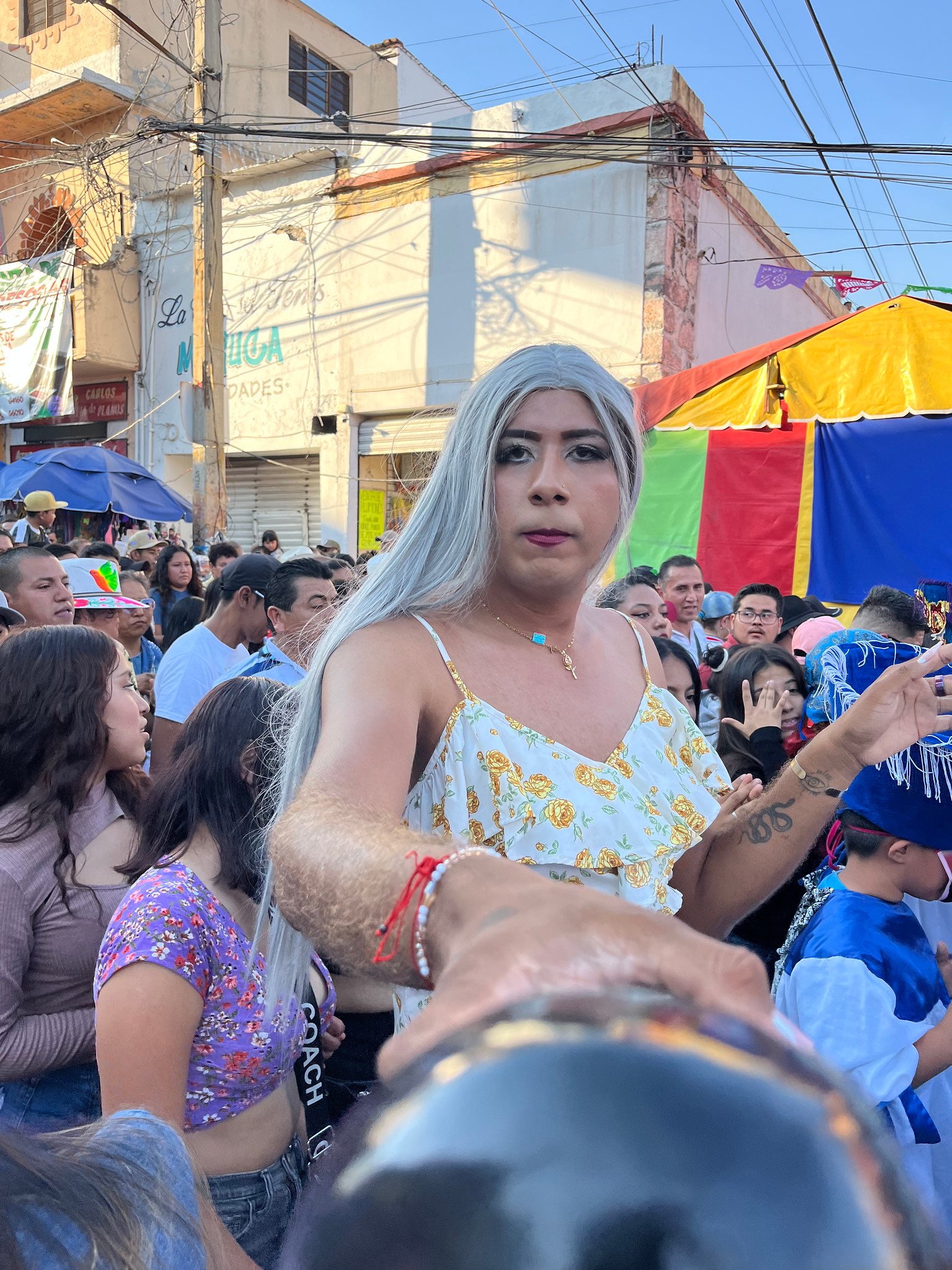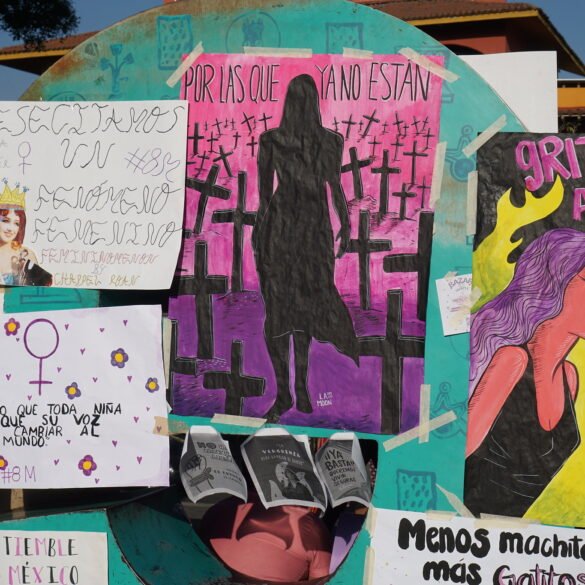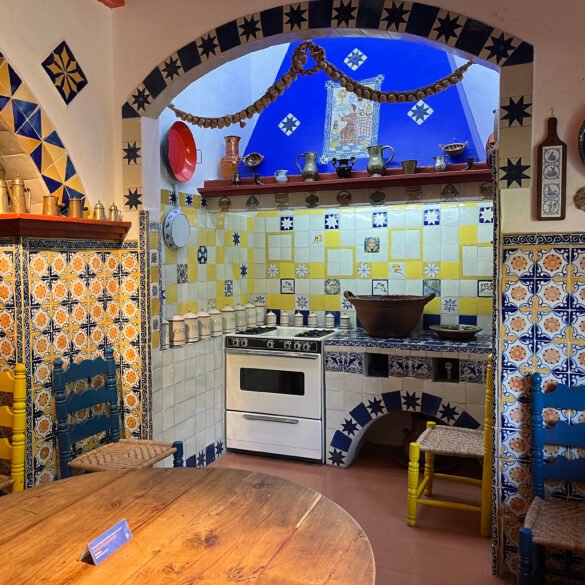The old, battered bus bounced along the road with dusty Mexican countryside rolling past the window. Google Maps on my phone showed we were approaching our destination: Yautepec de Zaragoza. Before the trip, I never imagined going to this small town in the middle of nowhere. And here we were, heading to Yautepec, with the hope of seeing them.
We saw them twice before: once at a Day of the Dead Parade in Mexico City and another time at a Mexican Independence Day celebration in Chicago’s Little Village. But both times, they were just a small part of the spectacle, a symbol of one region. Now we were in their home state, where they originated and where their tradition continues to thrive.
Chinelos
These traditional dancers from the state of Morelos represent an important part of Mexican culture. After the Spanish conquest, indigenous traditions and ceremonies merged into Christian festivals like Carnival. But even at such celebrations, natives came up with a way to mock the colonizers. Through elaborate costumes, masked performances, and dances, the local population ridiculed the Europeans for their appearance and mannerisms. In fact, the word “chinelos” comes from Nahuatl, meaning “disguised.” These days, Chinelos can be found at various Mexican festivals and celebrations (and just a few weeks ago, we ran into them again at an indigenous dance competition in Mineral de Pozos). Yet, the most authentic place to see them is still at a Carnival in Morelos between January and March.
We hoped to see Chinelos in Tepoztlan, where we were staying for three nights in March. Streets of this pueblo magico were filled with art depicting Chinelos, and the town’s central square even had a statue of a Chinelo dancer. Because we missed the Carnival by just a few days, our next best chance to see them was in the neighboring Yautepec, which hosted the Carnival the following weekend. There was virtually no information about the Yautepec Carnival available online in English, and I was able to collect only bits and pieces of relevant information in Spanish. The whole search for Chinelos felt like an adventure and a very off-the-beaten-track experience.
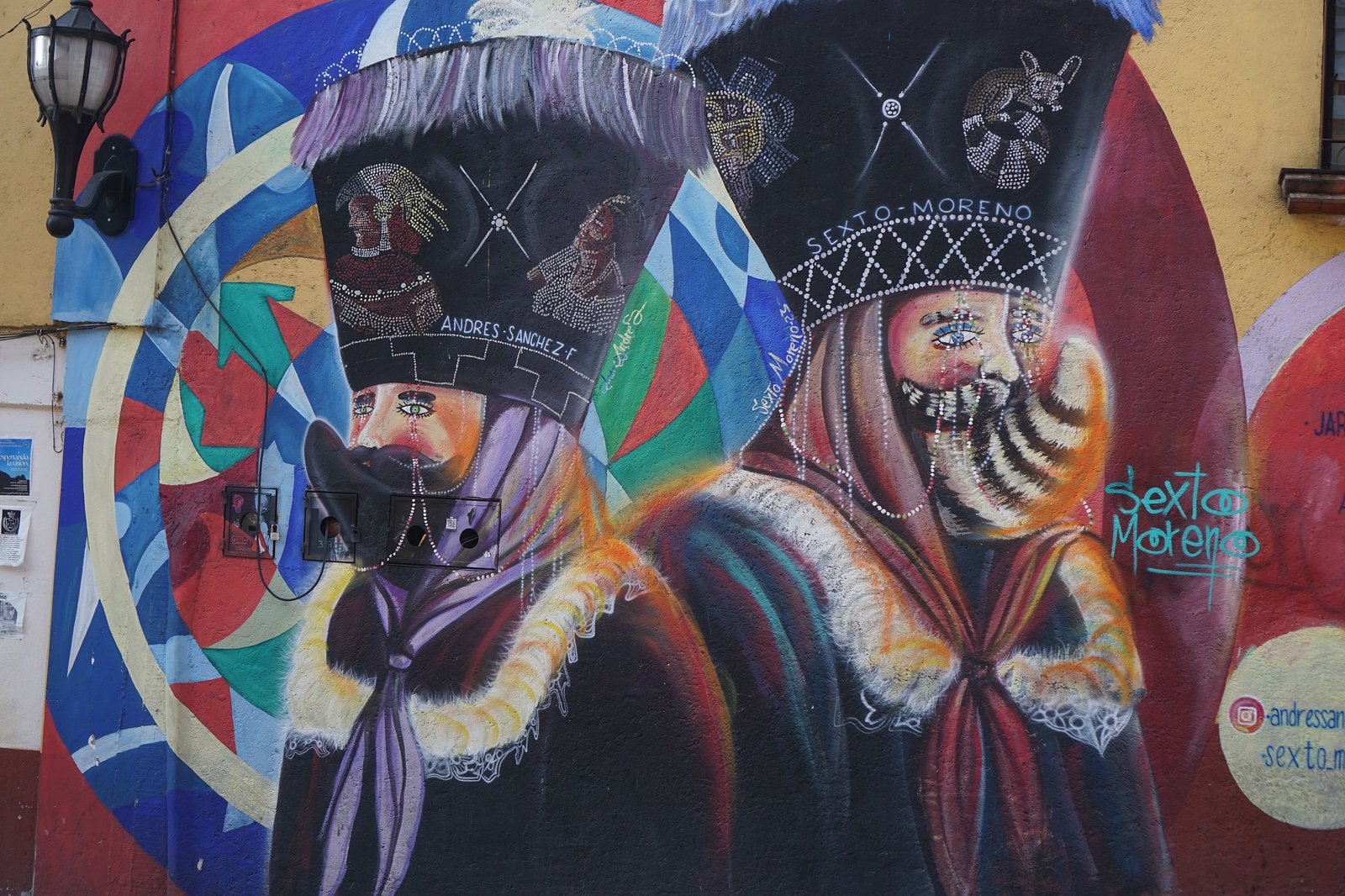
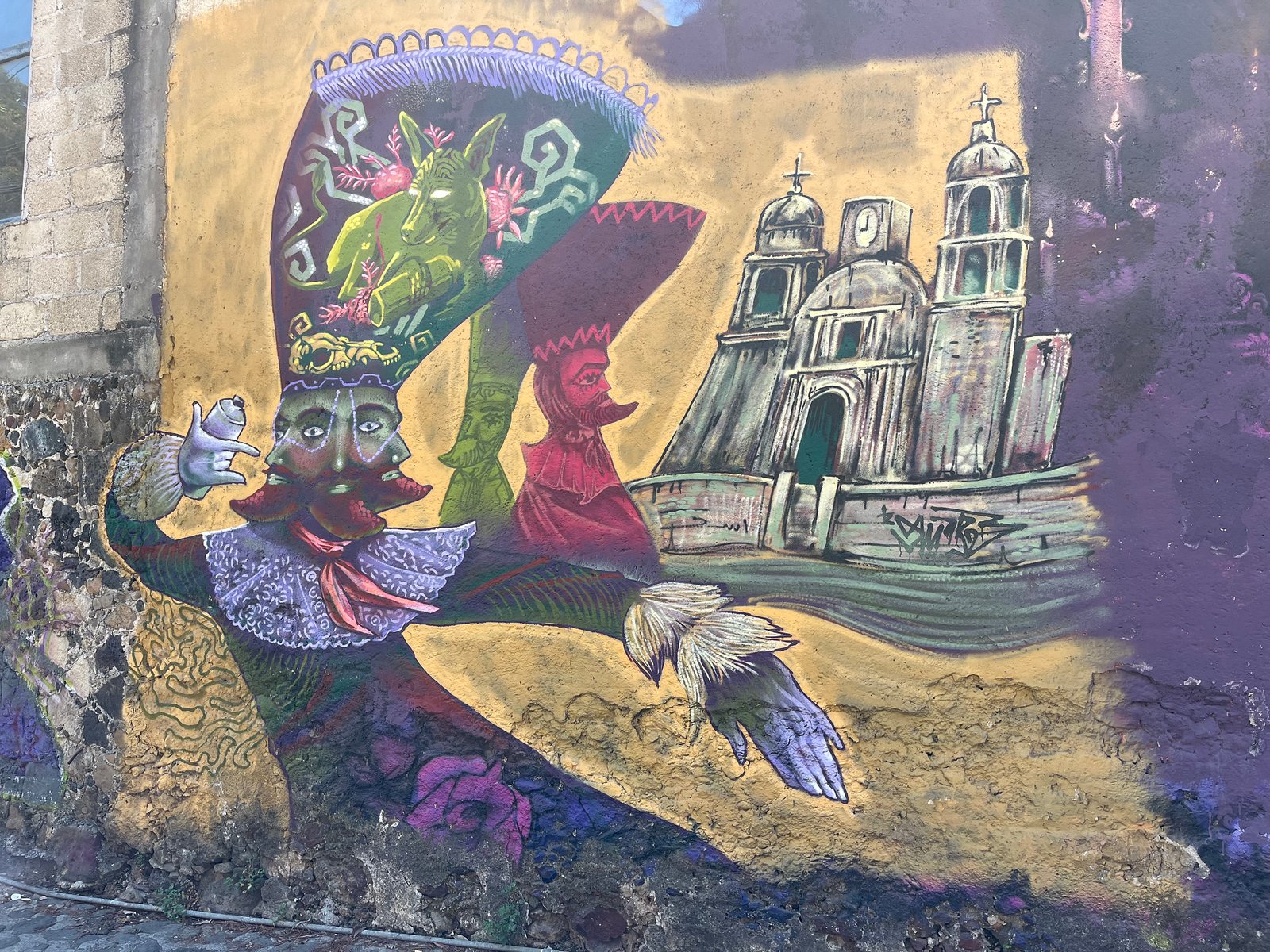
The bus dropped us off several blocks from the Yautepec town center. We were there in the late afternoon, and the town was getting ready to party. Streets were packed with festive crowds and vendors selling traditional festival fare: everything from delicious artisan bread and gorditas to aguas frescas and micheladas. There were several stages set up for performances and concerts. The music was loudly blasting on every corner, and people were having a good time.
We strolled around the town, and it became immediately clear that we were probably the only international tourists there. How do I know that? I was approached and asked for an interview not once but twice: one request came from the Yautepec town hall; the other from the local cultural center. In both cases, they wanted to know what brought us, two gringos, to Yautepec and whether we were having a good time. All I could do was compliment the town and the fun atmosphere and relay that we were there to see Chinelos.
To learn about the Chinelos tradition in more depth, we dropped by Museo Centro Cultural del Chinelo right in the middle of festivities by the main stage. The place was small, just a few rooms, but the entry was free and worth the stop. At this art museum/cultural center, we learned that a traditional Chinelo costume varies from town to town but largely includes four items: 1) a long, flowing velvet robe, 2) a mask with exaggerated European features like pointed beards and blue eyes, 3) an intricately ornamented hat decorated with feathers, and 4) gloves. If the costume is excessive and showy, the choreography of the dance is quite simple. Dancers move by taking shuffling or bouncing steps and jumping to the sounds of accompanying drums and other musical instruments.
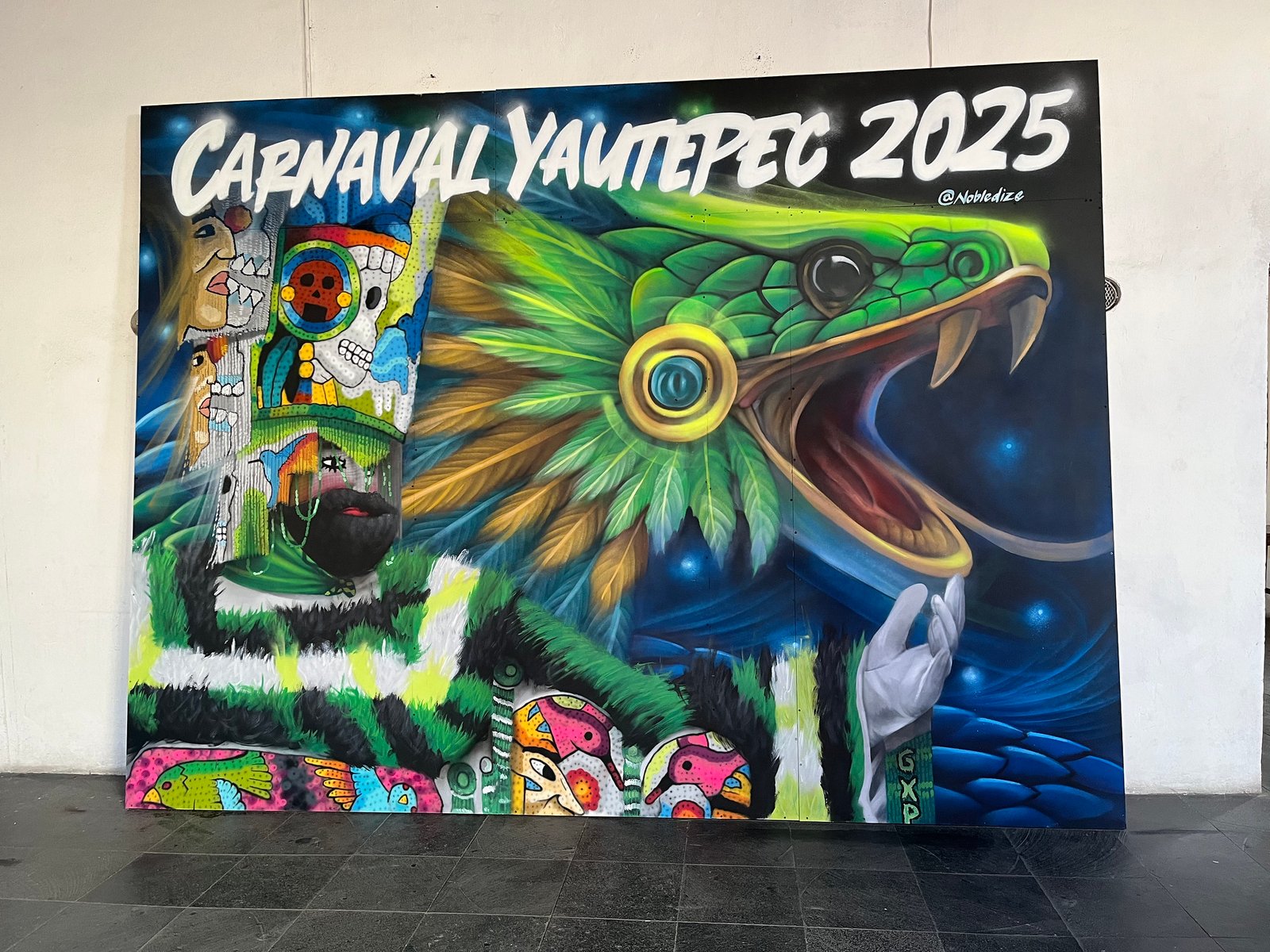
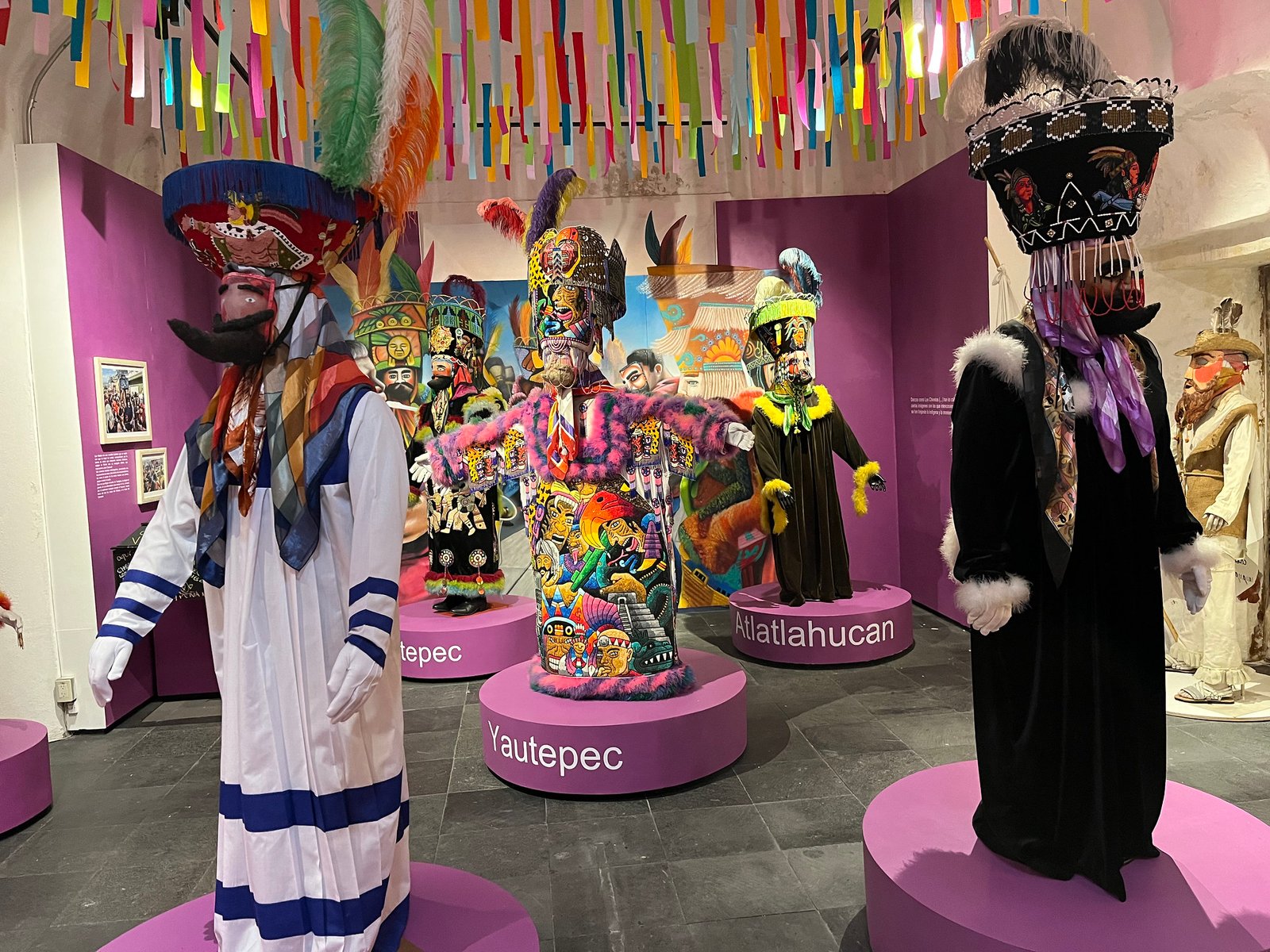
The best part of the museum was the room displaying variations of the Chinelos costume. The towns of Tlayacapan, Tepoztlan, Yautepec, Jiutepec, and Atlatlahucan, where the tradition is especially strong, were represented by incredibly detailed, intricate, and ornate dresses. There were so many details in each costume that just looking at these bright and elaborate outfits was enough to make us feel a little dizzy and trippy. Later, we learned that the most extravagant Chinelos costumes may get quite expensive and can fetch up to thousands of dollars in price from collectors.
Although we missed the Chinelo costume contest that the town hosted earlier that day, the ladies who worked at the cultural center told us that a Chinelos dance procession was starting shortly nearby. Twenty minutes later, we were at a raucous intersection surrounded by joyous festival crowds. What this was exactly, I'm still not sure. Some kind of a dancing procession, a festival march, a queer parade, a mix of everything! There were people dressed in drag, musicians playing instruments, and, of course, dancing Chinelos. The atmosphere was fun and boisterous. We were in the middle of the action, dancing with other people, waving to the participants of the parade, and taking endless pictures and videos. Everyone had fun. And to add to the collection of my favorite Mexican experiences … I was even poked with an inflatable dildo by one of the passing participants dressed in drag. Oh well … No regrets! At some point, we even joined the procession and waltzed to the town center with Chinelos dancing and swirling around us.
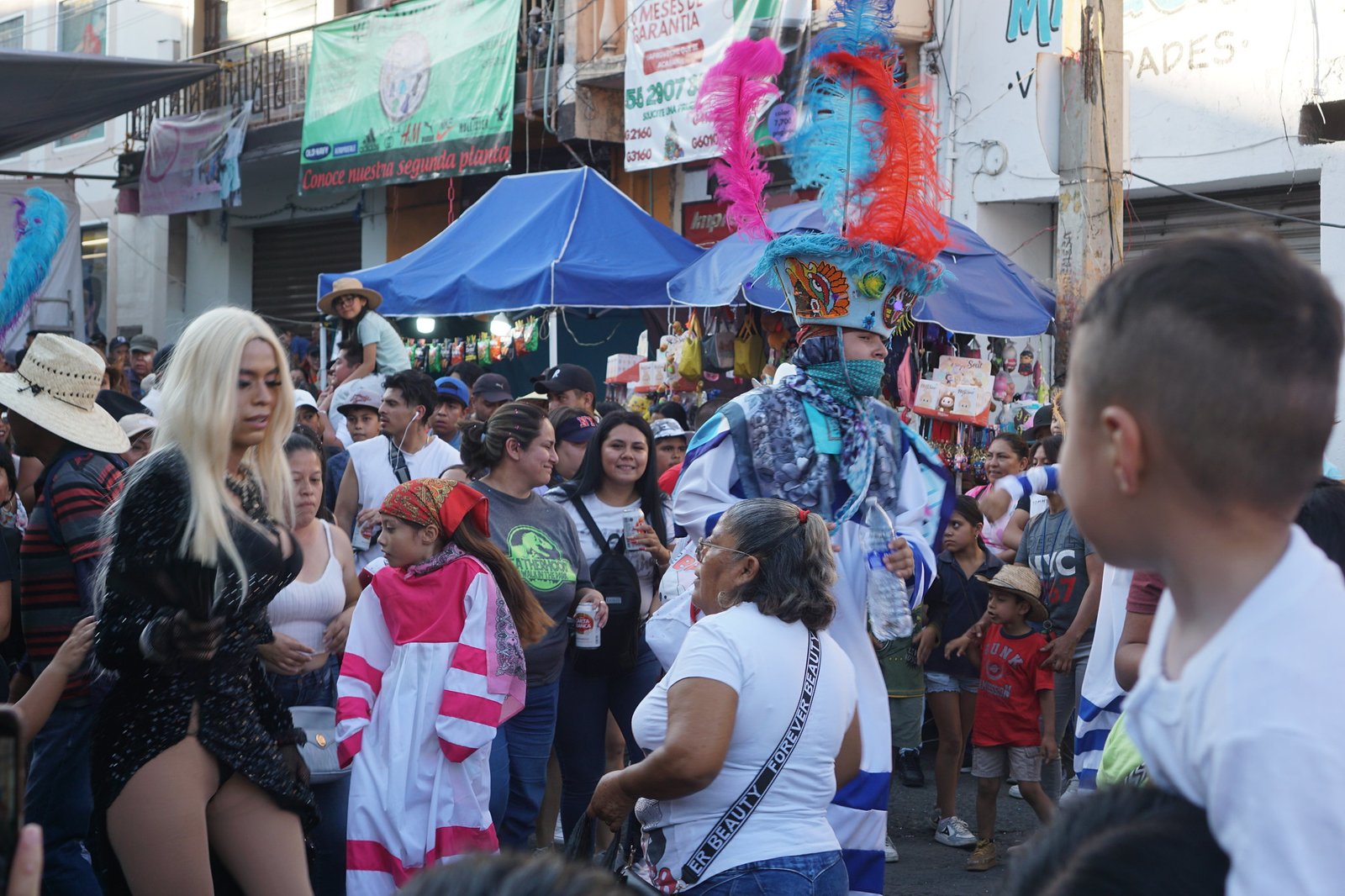
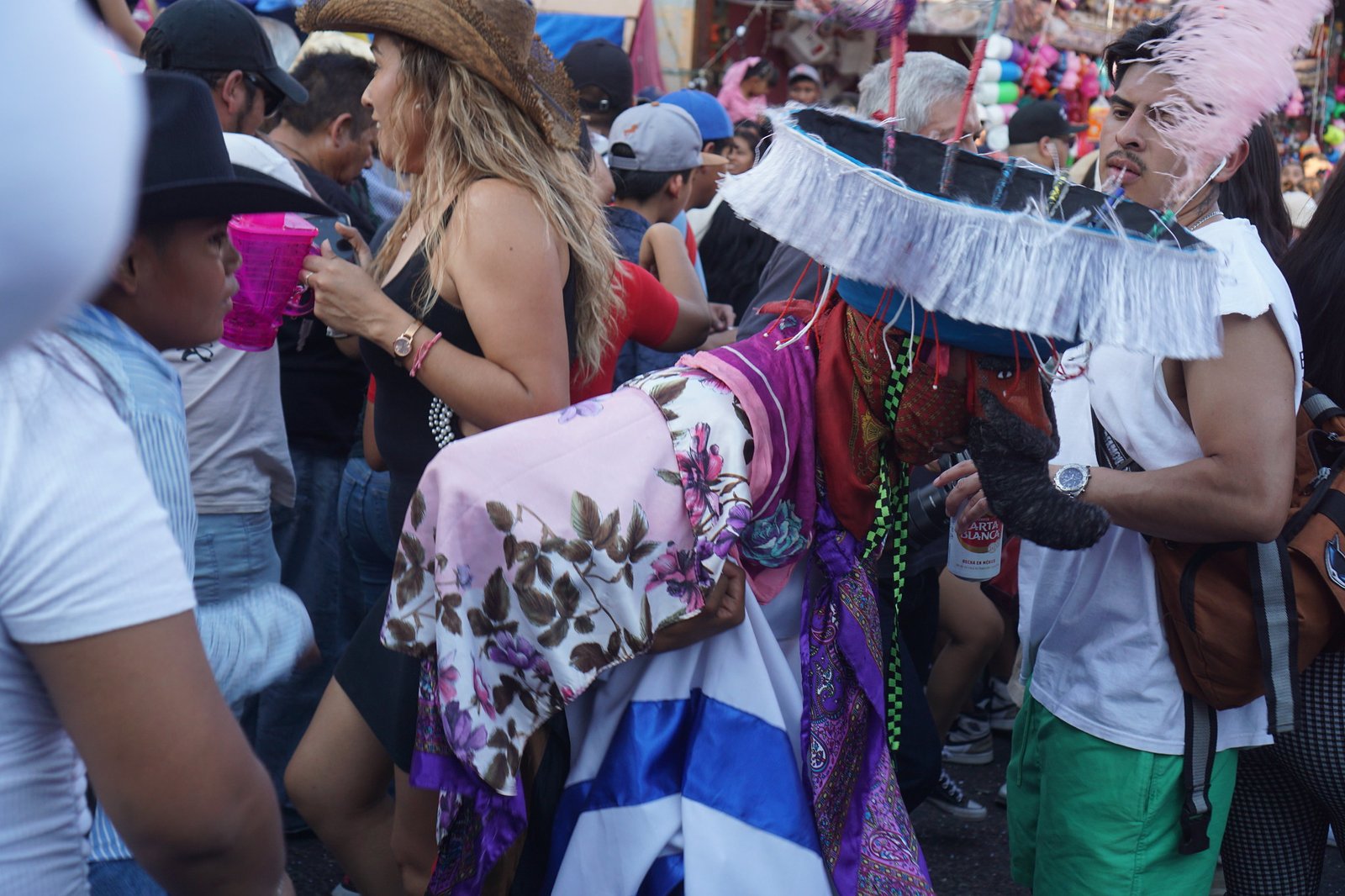
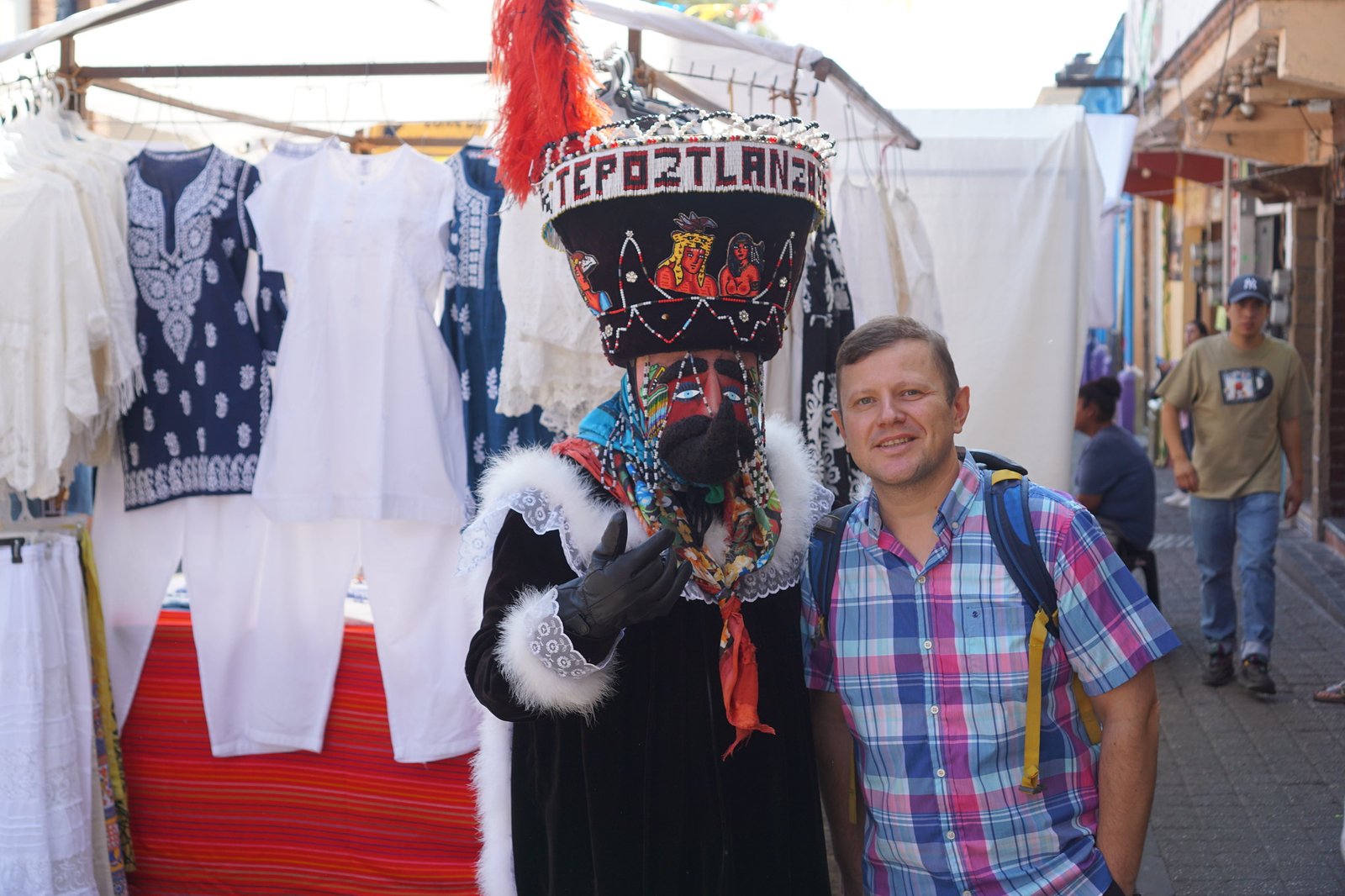
We returned to Tepoztlan late in the evening by taking the same bus we took to Yautepec. After a very long day, we were exhausted but happy. We got to experience and learn about another tradition of our beloved Mexico, the country that keeps on giving every time we visit it. And we keep visiting!
